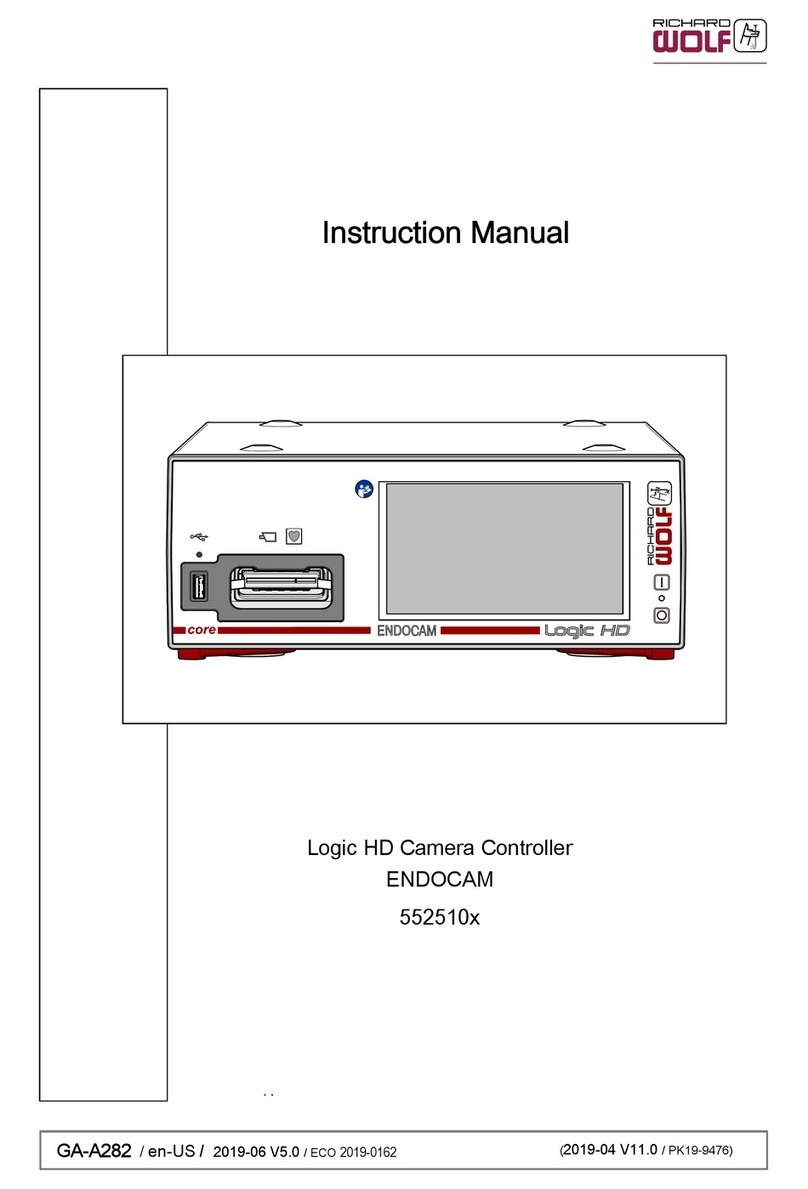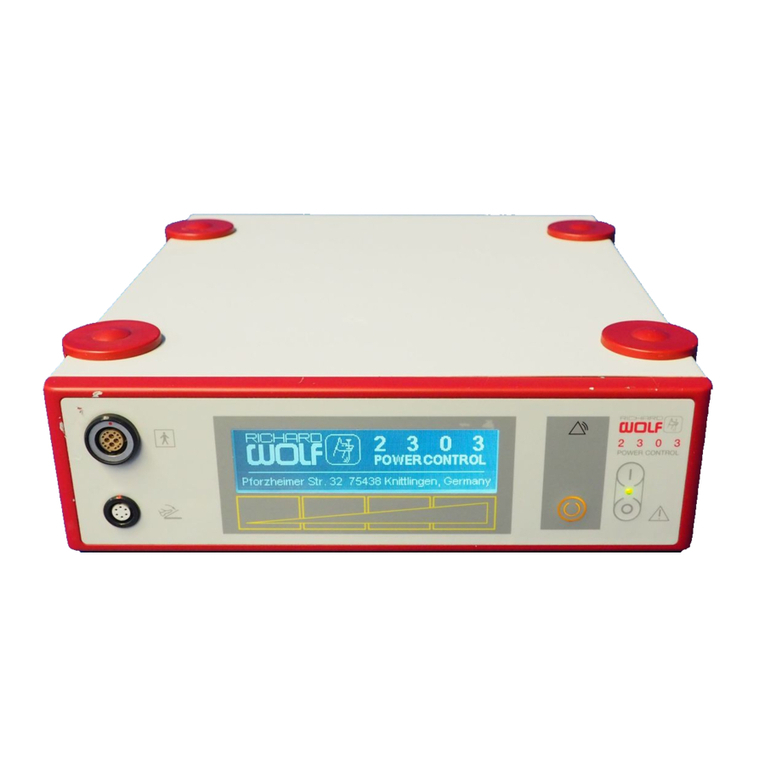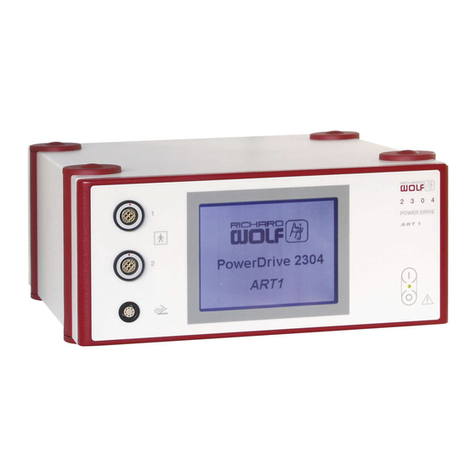
4GA--A 181
1.3.3 Specific requirements on the products/components of a combination
.IMPORTANT!
Persons combining products to form a system are responsible for not impairing the system’s compliance with
the performance and safety requirements, and that the technical data and the intended use are adequately
fulfilled.
Electromagnetic interference or other types of interference occurring between this product and other products
can cause failures or malfunctions.
When selecting the system components ensure that they meet the requirements for the medical environment
they are used in, in particular IEC/ EN 60601--1--1. In case of doubt contact the manufacturer(s) of the system
components.
Do not touch connecting devices for electrical connections between the different components (such as signal
input and output connections for video signals, data exchange, control circuits, etc.) and the patient at the
same time.
1.4 Electromagnetic compatibility (EMC)
NOTE: The device or system in the following called product always relates to the ultrasound generator 2271
Guidance and manufacturer’s declaration -- electromagnetic emissions
The product is intended for use in the environment specified below. The user should assure that the product is used in such an environment.
Emissions measurement/test Compliance Electromagnetic environment -- Guidance
HF emissions to CICPR 11 Group 1 The product uses HF energy for its internal function.
The HF emission level is extremely low and it is not likely to cause any
interference in nearby electronic equipment.
HF emissions to CISPR 11 Class B
Harmonic emissions to IEC 61000--3--2 Class A The product is suitable for use in all establishments, including domestic
--
In conformity with IEC 61000--3--3 “Voltage fluctuations / flicker
emissions”
--
power supply network that supplies buildings used for domestic purposes.
Guidance and manufacturer’s declaration -- electromagnetic immunity
The product is intended for use in the environment specified below. The user should assure that the product is used in such an environment.
Immunity tests IEC 60601 test level Compliance Electromagnetic environment -- guidance
Electrostatic Discharge (ESD)
to IEC 61000--4--2 ±6 KV contact
±8KVair Yes Floors should wood, concrete or ceramic tile.
If the floors are covered with synthetic material, the
releative humidity should be at least 30%.
Electrical fast transients, bursts
to IEC 61000--4--4 ±2 KV for power supply lines
±1 KV for input/output lines Yes Mains/line power quality should be that of a typical
commercial or hospital environment.
Surge voltage (surges)
to IEC 61000--4--5 ±1 KV differential mode
±2KVcommonmode Yes Mains/line power quality should be that of a typical
commercial or hospital environment.
Voltage dips, short interruptions and
voltage variations on power supply
input lines
to IEC 61000--4--11
Voltage dip for 0.5 cycle
> 95% UT*
Voltage dip for 5 cycles
> 60% UT*
Voltage dip for 25 cycles
> 30% UT*
Voltage dip for 5 sec
> 95% UT*
Yes
Mains/line power quality should be that of a typical
commercial or hospital environment. If the user of
the product requires continued operation during
power mains/line interruptions it is recommended
that the product be powered from an uninterruptible
power supply or battery.
Power frequency (50/60 Hz) magnetic
field,
to IEC 61000--4--8 3A/m Yes Power frequency magnetic fields should be at
levels characteristic of a typical location in a
commercial or hospital environment.
*NOTE: UTis the line/mains voltage prior to application of the test level.
































